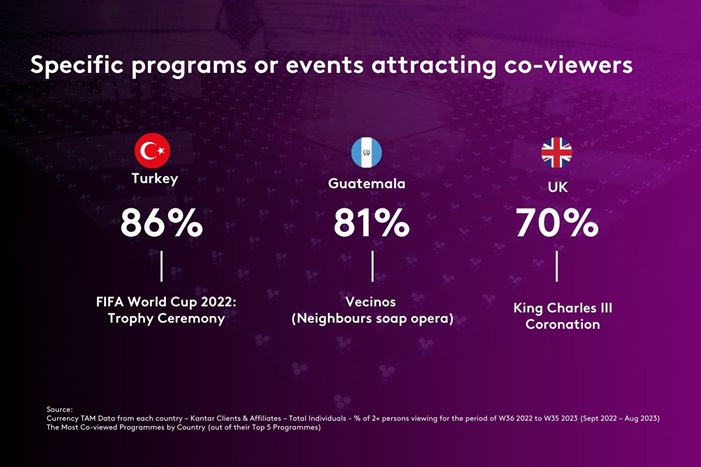How can broadcasters and advertisers harness co-viewing to maximise the impact of their strategies? Evgenia Molchina and Laurence Chausson explore these themes further and assess the role of panels in delivering people-based measurement to understand the full viewing picture

It’s not devices that are watching content or ads – it’s people. Yet, before you can delve beneath the surface as to who those viewers are, we first need to understand how many people are really in front of the screen and how levels of co-viewing vary.
What influences co-viewing? How can all players in the ecosystem harness it to maximise the impact of their strategies? Here we explore these themes further and assess the role of panels in delivering people-based measurement to truly understand the full viewing picture.
We can see from Kantar Media’s audience data that the levels of co-viewing vary by market. For instance, co-viewing accounts for more than half of all viewing in Turkey (73%), Colombia (60%) and Vietnam (56%), whereas in Brazil (28%), Estonia (29%) and Chile (33%) co-viewing represents the minority of all viewing.

Whether you are commissioning new content or planning an ad campaign, understanding the drivers and influences of co-viewing will give your decision-making the edge.
Seasonality
Recent Kantar Media analysis showed that in some markets with highly variable, seasonal weather patterns e.g. UK, Norway & Turkey, viewing levels increase in the winter months. However, our data shows that the share represented by co-viewing stays relatively stable – even as the seasons change. Instead, we can see that some of the more significant drivers of co-viewing are moments of national or cultural importance.
For instance, we see that in Turkey during Ramadan in 2023, co-viewing increased by 12% as household members were spending more time at home together. The same applies when analysing the data by genre. Religious programs in Turkey see an increase in co-viewing during Ramadan as 78% of their viewers watch the content as a group compared to 72% during the rest of the year.
The power of content
Certain genres and shows have a greater ability to bring audiences together as a shared experience.
Kantar Media looked at the broadcasts with the highest proportion of co-viewing across fifteen countries in recent years. Perhaps unsurprisingly, sporting events topped the co-viewing rankings in eight out of fifteen countries with the FIFA World Cup being a major driver of shared viewing on TV sets as families and friendship groups came together to watch the action.
Apart from sport, major local TV series in Vietnam, Guatemala and Estonia were the biggest drivers of co-viewing – while in Slovakia, Norway and Romania, it was programming related to national Christmas events that attracted groups of viewers the most. In the UK, King Charles III coronation – the first in seventy years – saw British households come together to watch the historic event.

People-based measurement unlocks audiences
Understanding the nuances of co-viewing – and its fluctuations by market and genre – are critical to grow audiences and, ultimately, determine the impact of programming and advertising campaigns.
At Kantar Media, the combination of our powerful metering technology, expertise in building and maintaining panels and data science enables us to calibrate and unify datasets to derive new, granular insights into audience behaviours.
